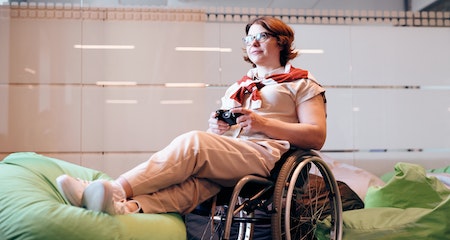Disabled People Medical Care
Many people with disabled have difficulty accessing health care. Their challenges include lack of insurance coverage for essential services, such as prescription drugs, specialty care, durable medical equipment, and long-term care.
These barriers could be exacerbated if there is poor oversight by Federal agencies and a lack of implementation of key disability rights laws. Also, leading health care facility accreditation organizations do not evaluate facilities for compliance with the ADA’s architectural accessibility guidelines.
Accessibility
The accessibility of medical care for disabled people is crucial to the delivery of high-quality health services. People with disabilities are less likely than others to receive routine preventive care, and more likely to suffer from secondary conditions like pain, fatigue, or depression.
Lack of insurance is a barrier to medical care. A complicated insurance system can delay or deny coverage based upon a person’s past health events or health status. Cost-sharing obligations restrict access to prescription medications, equipment and specialty care.
To ensure that the physical and programmatic barriers to accessing health care for disabled people are eliminated, NCD recommends reforms addressing a broad range of issues. These include access to wellness programs and prevention, research on health and disability disparities, professional training, and models that are patient-centered and inclusive. The recommendations also call for legislative action to address these and other barriers.
Communication
People with disabilities make up a large portion of the population, approximately 1.3 billion people worldwide. They face many barriers to accessing medical care. These include medical ableism, ableist stereotypes and attitudinal, structural, physical, financial and time barriers.
However, despite these barriers, people with disabilities tend to use health care services at higher rates than nondisabled people do. Nevertheless, many disabled people experience ineffective communication with their health care providers that can significantly impact their well-being.
This research investigated physicians’ perceptions of communicating with their patients who have hearing, vision or intellectual disability. Participants were asked about their communication experiences during semi-structured individual interviews. Interview recordings were transcribed verbatim for analysis.
Confidentiality
Healthcare professionals have a moral obligation and a legal obligation to keep medical care confidential for people with disabilities. HIPAA (Health Insurance Portability and Accountability Act), rules state that patients cannot share their health information with nurses, doctors, or other professionals unless they consent.
Employers receiving federal financial assistance, such as Social Security disability benefits, also must adhere to the confidentiality requirements of ADA. This means that personnel records related to disability must be kept secret, with some exceptions.
Equipment
These could include special medical devices, wheelchairs, or equipment that assists with eating, dressing and walking.
Accessible equipment is critical to the delivery of safe, effective, and equal medical care to people with disabilities. People with disabilities may not have access to the equipment they need in order to receive essential diagnosis and treatment. This could lead to their condition becoming more serious or even fatal.
Exam tables are a primary piece of medical equipment for all types of primary and specialist care examinations and procedures, including obstetrics and gynecology, physical therapy, oncology, podiatry, dermatology, and urology. Patients can be delayed diagnosis and receive incomplete exams if the examination table is not accessible.
For people with mobility impairments, mechanical lifts and height-adjustable medical devices are essential to enable them to receive examinations, treatment, and other services. They carry too many inherent dangers that could cause pain, fatigue strain, strain, injury, or even death.
Communication
People with disabilities make up a large portion of the population, approximately 1.3 billion people worldwide. They face many barriers to accessing medical care. These include medical ableism, ableist stereotypes and attitudinal, structural, physical, financial and time barriers.
However, despite these barriers, people with disabilities tend to use health care services at higher rates than nondisabled people do. Nevertheless, many disabled people experience ineffective communication with their health care providers that can significantly impact their well-being.
This research investigated physicians’ perceptions of communicating with their patients who have hearing, vision or intellectual disability. Interview recordings were transcribed verbatim for analysis.
Confidentiality
Healthcare professionals have a moral obligation and a legal obligation to keep medical care confidential for people with disability support services Melbourne . HIPAA (Health Insurance Portability and Accountability Act), rules state that patients cannot share their health information with nurses, doctors, or other professionals unless they consent.
Confidentiality is also essential to protect patients’ privacy and ensure that they receive the best possible care.
Employers receiving federal financial assistance, such as Social Security disability benefits, also must adhere to the confidentiality requirements of ADA. This means that personnel records related to disability must be kept secret, with some exceptions.
Equipment
These could include special medical devices, wheelchairs, or equipment that assists with eating, dressing and walking.
Accessible equipment is critical to the delivery of safe, effective, and equal medical care to people with disabilities. People with disabilities may not have access to the equipment they need in order to receive essential diagnosis and treatment. This could lead to their condition becoming more serious or even fatal.
Exam tables are a primary piece of medical equipment for all types of primary and specialist care examinations and procedures, including obstetrics and gynecology, physical therapy, oncology, podiatry, dermatology, and urology. Patients can be delayed diagnosis and receive incomplete exams if the examination table is not accessible.
Additionally, For people with mobility impairments, mechanical lifts and height-adjustable medical devices are essential to enable them to receive examinations, treatment, and other services. Additionally, They carry too many inherent dangers that could cause pain, fatigue strain, strain, injury, or even death.
Exam tables are a primary piece of medical equipment for all types of primary and specialist care examinations and procedures, including obstetrics and gynecology, physical therapy, oncology, podiatry, dermatology, and urology. Patients can be delayed diagnosis and receive incomplete exams if the examination table is not accessible.
Additionally, For people with mobility impairments, mechanical lifts and height-adjustable medical devices are essential to enable them to receive examinations, treatment, and other services. Additionally, They carry too many inherent dangers that could cause pain, fatigue strain, strain, injury, or even death




